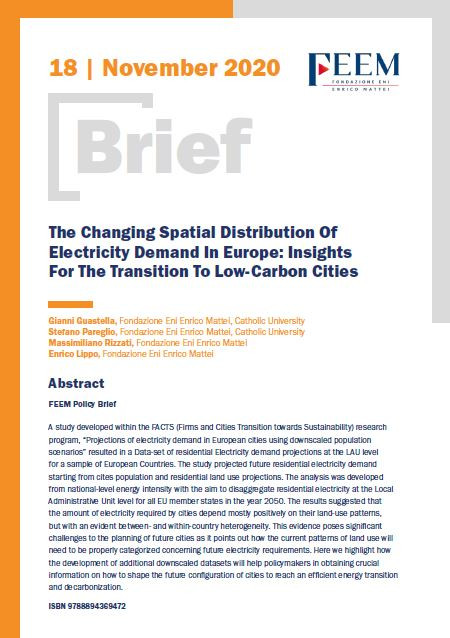The Changing Spatial Distribution Of Electricity Demand In Europe: Insights For The Transition To Low-Carbon Cities

24.11.2020
A study developed within the FACTS (Firms and Cities Transition towards Sustainability) research program, “Projections of electricity demand in European cities using downscaled population scenarios” resulted in a Data-set of residential Electricity demand projections at the LAU level for a sample of European Countries. The study projected future residential electricity demand starting from cites population and residential land use projections. The analysis was developed from national-level energy intensity with the aim to disaggregate residential electricity at the Local Administrative Unit level for all EU member states in the year 2050. The results suggested that the amount of electricity required by cities depend mostly positively on their land-use patterns, but with an evident between- and within-country heterogeneity. This evidence poses significant challenges to the planning of future cities as it points out how the current patterns of land use will need to be properly categorized concerning future electricity requirements. Here we highlight how the development of additional downscaled datasets will help policymakers in obtaining crucial information on how to shape the future configuration of cities to reach an efficient energy transition and decarbonization.
A study developed within the FACTS (Firms and Cities Transition towards Sustainability) research program, “Projections of electricity demand in European cities using downscaled population scenarios” resulted in a Data-set of residential Electricity demand projections at the LAU level for a sample of European Countries. The study projected future residential electricity demand starting from cites population and residential land use projections. The analysis was developed from national-level energy intensity with the aim to disaggregate residential electricity at the Local Administrative Unit level for all EU member states in the year 2050. The results suggested that the amount of electricity required by cities depend mostly positively on their land-use patterns, but with an evident between- and within-country heterogeneity. This evidence poses significant challenges to the planning of future cities as it points out how the current patterns of land use will need to be properly categorized concerning future electricity requirements. Here we highlight how the development of additional downscaled datasets will help policymakers in obtaining crucial information on how to shape the future configuration of cities to reach an efficient energy transition and decarbonization.
